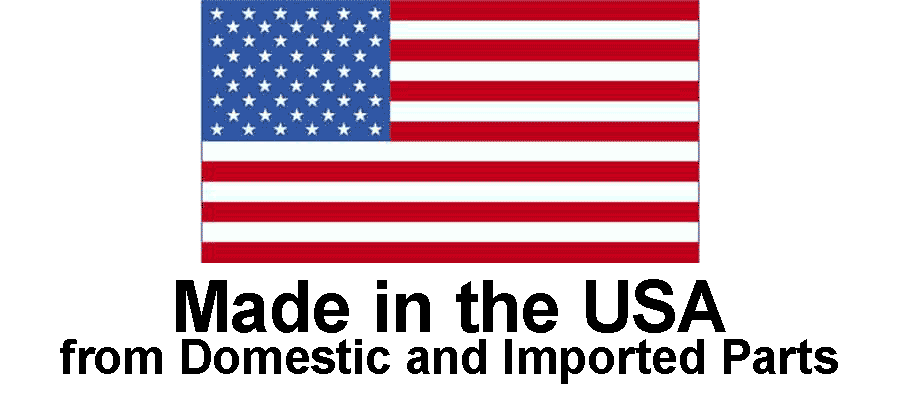
Advancement International Ltd.
595 Circlewood, Aurora, OH 44202(USA)
Email: sales@LugsDirect.com
Phone: 330-562-8983 | FAX: 330-562-9990
 |
Operated By: Advancement International Ltd. 595 Circlewood, Aurora, OH 44202(USA) Email: sales@LugsDirect.com Phone: 330-562-8983 | FAX: 330-562-9990 |
IHIConnectors |
Brumall Manufacturing Corp. |

Greaves Electrical Connectors |
Accepted forms of payment: |
||||||
 |
|||||||||
recommended reading: UL test assembly procedures UL486A/B
Bolts:
Hexagonal Bolt Grade minimum SAE grade 2 UNC Coarse thread.
Diameter of bolt used should be compatible with hole in tang.
Washers:
Plated SAE, DIN compact, or Stainless Steel Flat washers to be used on BOTH sides.
Diameter of SAE, Din compact, or Flat washers and Bellevilles to be compatible to size of bolt.
Consider use of Bellevilles for applications where vibration or other factors that could reduce clamping force over time (like differential thermal expansion of dissimilar metals including ferrous fasteners and non-ferrous bus/tang bolting). Where Bellevilles washers are used, both of the flat washers must still be used to protect tin plated aluminum faces from indentation and loss of clamping force. Washer under the Belleville should be large enough to prevent the outer edge of the Belleville from touching the aluminum lug. Only one Belleville washer per bolt is used when needed.
Belleville specification for minimum flattening force is to meet above chart based on size of bolt.
Lug Mounting hole size:
Typically the tang bolt hole is about 3% to 10% larger than the bolt depending on manufacturer and process used.
Lubrication, Anti-oxidants:
No lubrication is used on screws or nuts to avoid distorting the lug tang or the bus from overclamping.
A minimum of two threads of the bolt thread should show through the nut when tightened.
Consider use of commercial antioxidant grease for joints with aluminum tangs, bus bars or wire, mixed metals, damp conditions or any other conditions leading to some loss of clamping pressure on the bus or connecting wire. Most manufacturers of aluminum connectors and aluminum wire recommend the use of anti-oxidant coating on the bare aluminum wire after abrasively cleaning the wire. Tin plated aluminum lugs and connectors shout NOT be cleaned since the tin would be removed voiding the warranty and creating a loss of protective tin plating.
Fretting wear or other contact wear can remove tin coatings on aluminum lugs causing aluminum to oxidize which gives high contact resistance. This must be avoided by proper installation practices.
Current Density and Bus sizes:
Bus bars made of copper should not exceed 1000 Amps per inch squared of cross section.
Aluminum bus bars should not exceed 800 Amps per inch. squared of cross section.
User responsibility:
Lug manufacturers do not control the end use conditions consequently users must evaluate properly all the applicable engineering criteria and standards involved for themselves.
The information above is suggested for favorable conditions only.
Favorable conditions are typically enclosed, static, and free of moisture , vibration and excessive heat and cold.
Hardware Typical for Bolting Listed Lugs to Bus Bars |
||||||
| Size of Steel SAE Bolt used UNC Class 2 or 3 Grade 2 or higher | Metric Bolt size used | Tightening torque Foot-lbs | N-m | If Belleville used, Minimum flattening force required (Pounds) | (N) | Flat Washer (plated steel or SS) 1 under bolt head (or Belleville) and 1 under nut |
| #8 | 1.5 | 2 | - | Yes | ||
| #10 | - | 2 | 3 | - | Yes | |
| 1/4 | M6 | 6 | 8 | 800 | 3,560 | Yes |
| 5/16 | M8 | 11 | 15 | 1000 | 4,450 | Yes |
| 3/8 | M10 | 19 | 26 | 1400 | 6,230 | Yes |
| 7/16 | - | 30 | 41 | 2700 | 12,015 | Yes |
| 1/2 | M12 | 40 | 54 | 2700 | 12,015 | Yes |
| 9/16, 5/8 over 5/8 |
- | 55 | 75 | 3400 | 15,130 | Yes |
Copyright © 2025 Advancement International Ltd, Aurora Ohio - All Rights Reserved
Advancement International Ltd is a registered company of Ohio, USA
IHI® is the Registered Trademark of International Hydraulics Inc.
LugsDirect.com is owned and operated by Advancement International Ltd.
DUNS # 148692197, REGISTERED WITH CCR, CAGE / NCAGE NUMBER 5A6R9,
A2 WOMAN OWNED SMALL BUSINESS, NAICS 423610, SIC 3643,
Made in the USA from domestic and imported parts. USMCA CERTIFICATES AVAILABLE